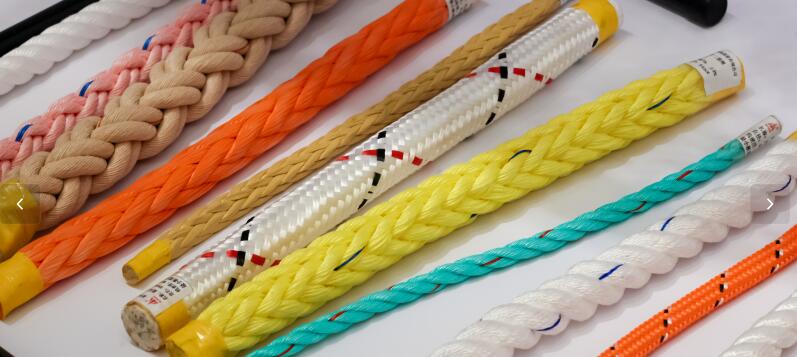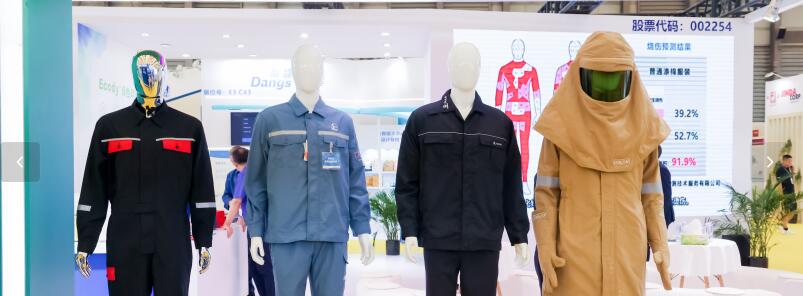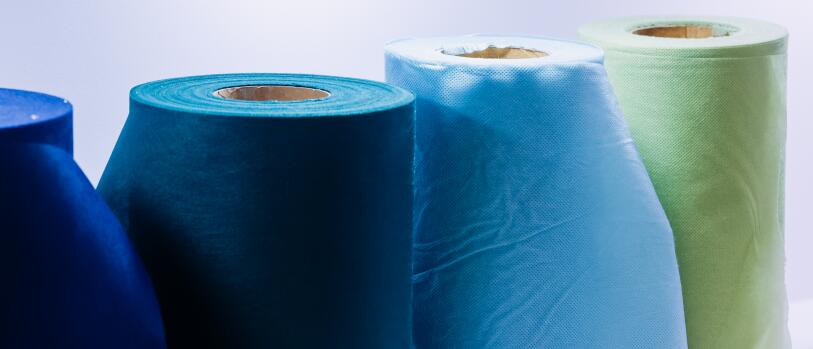|
|||||||||
|
|
| The economic operation analysis on year 2015 techtextile industry |
|
The economy in our country, in spite of the big downward pressure and its growth slowdown, turned out a steady increase in general. The techtextile industry overcame various unfavorable factors and speeded up the pace of transformation and upgrading, improving operation efficiency, increasing investment in technological innovation, actively developing new products in a wider spectrum of applications and markets by delicate management. Therefore, the general operation presented a slowing growth, stable operation and good benefit situation. According to the National Bureau of Statistics, the main business revenue and profit of the enterprises above the designated size in techtextile industry was up 6.51% and 14.44% respectively, the industrial added value and profitability was up 12.4% and 5.9% respectively during the past eleven months. The export was basically leveled off but increased slightly compared with last year. According to the survey of 140 enterprises by the association, the industrial business index of the whole year’s operation was 72.3, which was highly satisfied by entrepreneurs. Techtextile industry performance in 2015 The demand was more complicated in techtextile industry due to the downward pressure on the economy. Specifically, the market demands from infrastructure construction, environmental protection, and life health continued to maintain a high growth, but there are fields showing a slow growth or even decline, for example, artificial leather cloth, transportation textile, tire cord fabrics, etc.According to the survey of the member enterprises by China Nonwovens & Industrial Textiles Association (CNITA), the industrial demand index and production index was 52.9 and 54.3 respectively, which were the lowest points in recent years, but still stayed in the expansion range in 2015. According to the National Bureau of Statistics, the non-woven production of the enterprises above the designated size in January-November was 4.034 million tons, up 15.77% year on year, securing the most dynamic growth in techtextile industry in contrast to only 1.59 million tons in 2010. During the 12th Five-Year Program period (2011 - 2015),the production of the non-woven was up 177% at accumulative growth rate with an average annual growth of 22.58%. In regional growth, Shangdong has surpassed Zhejiang and became the largest non-woven production province, with the application mainly concentrated on civil engineering and architecture fields, accounting for 20% of the total production in our country and continuing to maintain a rapid growth rate of 32.66% in the past eleven months (Jan.- Nov., 2015). In some areas like Zhejiang, Jiangsu, Hubei, etc. the nonwoven production has maintained around 10% of the growth. The tire-cord fabric production started to drop in the first half of 2014 and amounted to 717,000 tons in 2015 with a decrease by 6.56% year on year, but still enjoying the accumulative growth rate by 55.9% over 2010, with an annual growth of 5.59%. Situation in key applications Medical and hygienic textiles Medical and hygienic textile is a field with large and robust market demand as it is closely related to life and health. The market potential is continuing to be released with the improvement of the income level and change of consumption ideas. Regarding the medical dressing, operation cloth and disposable hygienic products, China has a very big production capacity and is also the world’s leading producer and exporter. The export medical and hygienic textile was 3.19 billion dollars in 1 - 11, 2015, registering 1.35% in year-on-year growth. To be more exact, the export of sanitary pads and baby diaper was 1.43 billion dollars with an increase of 3.89%. The export of medical protective clothing made of non-wovens is 0.99 billion dollars with an increase of 4.27%. However, the export of gauze, bandage and other medical dressings is 0.77 billion dollars and decreased by 6.28%. The enterprises which produce the medical dressings and medical exposure suits have to turn to the overseas market as they have difficulty with hospital procurement system in China. Pengyang town (located in Xiantao city, Hubei province) is an important medical textile product cluster. In 2015, the main business income was 13.1 billion yuan and the export delivery value was 9.26 billion yuan with an increase of 9.14%, which accounted for 70.6% of the annual income. Geo-textiles Geo-textile is mainly used in all kinds of infrastructure engineering and environmental protection projects. In the first half year of 2015, large numbers of projects are at the stage of planning and designing with few projects that came into operation, therefore, the geo-textile industry is faced with some challenges. In the second half year of 2015, the orders increased dramatically and the operation system got its breath again with some growth thanks to constructing large numbers of railways and water conservancy projects. Lingcheng district(located in Dezhou city, Shandong province) is the main production base of geo-textiles with over 10 billion yuan of main business income in 2015 and 0.82 million tons of geomaterials. Textiles used for filtration and separation The whole society paid close attention to the quality of atmospheric environment and the country continued to increase atmospheric environmental regulation, which has provided good opportunity for air filtration industry, for many cities wereblanketed by haze or smog on and off in the whole year of 2015. The filtrating effect of bag-type dust collecting technology has reached near zero emission with four years of average service life thanks to the development of high performance fiber and improvement of bag-type dust manufacturing technology. Moreover, the comprehensive recycling of used bags has achieved breakthroughs with more significant advantages of the bag-type dust collecting technology. In July 2015, Emission Standard of Air Pollutants for Cement Industry was put into effect. Massive funds were poured into the cement industry to transform the environmental protection equipment, the market in metallurgy and electric power industry increased constantly, which has driven the rapid development of industry. Fucheng street (located in Funing county, Jiangsu province) is a high temperature filter material industry base, producing 0.2 billion square meters of filter materials in 2015 with 13.64% main business income at growth rate. According to the statistics of the member enterprises in filtration field, the main business income and total profit was up 15.67% and 32.33% respectively, and the average profit margin was 7.4%. Textiles used for vehicles The year of 2015 witnessed 24.5033 million cars produced and 24.5976 million cars sold, hitting a new record high with an increase by 3.3% and 4.7% respectively, comparing the data in previous year, therefore, the economic situation in general runs steadily at a growth speed. Meanwhile, the sales and production of cars were 4 and 2.2 percentage points lower than that of last year.The slowdown in car market has brought some pressure for vehicle textiles. In the long run, the traditional car industry will increase at a medium-low speed, and light weight and new energy are two important trends for future automobile industry. The textile composite materials were widely applied in automobiles with the quality of light weight, great strength and low cost. In the future, the textiles used for vehicles will have a larger growth space with the growing consumption of textile materials for per car. Development prediction in 2016 Year 2016 is the first year of the 13th Five-Year Program; the techtextile industry will be ushered into a new period of an important development opportunity on the grounds that, firstly, during the 12th Five-Year Program period, the techtextile industry developed rapidly with highspeed growth of industrial scale, continuous improvement of economic efficiency, remarkable results of technological progress and industrial transformation, rapid development of important sub-industries, constant expansion of application fields, all of these have laid a solid foundation for the development of industry in the 13th Five-Year Program period and made the industry development at a higher starting point. Secondly, techtextilehas a high dependency on national economy. China has increased investment in infrastructure construction, environmental protection and medical healthcare along with the continuous development of society and economy as well as the thorough implementation of the “One Belt One Road”Initiative. Therefore, the huge domestic market is still the greatest motivation for industrial development. Thirdly, Supply-front reform will provide a growth impetus to industrial transformation, speeding up the update of the advanced equipment and high-end capacity investment, accelerating technological transformation and new product development, promoting the industrial competitiveness, and better replacing import and participating in the international competition. But the development of industry also faces some challenges. Firstly, the market demand presented a slowdown or even a structural decline in some fields owning to the slowing economic speed in the New Normal period. Secondly, the world economic situation is still complicated and the economic recovery is slow in Europe and Japan. The position of international market is becoming preponderant in Chinese techtextile industry, especially as the high-end products in the backbone enterprises are exported at pro-rated growth. Thirdly, the chronic downturn of the raw material market suppressed price of the finished products in the downward channel for a long time, which has brought big pressure on the growth of industry. In 2016, the production, investment, and sales in Chinese techtextile industry will continue to increase at a high speed with good economic benefits and the export will grow at 5%, as estimated. (by CHINA TEXTILE) |


